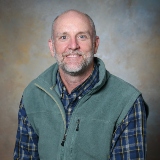
Ph.D., University of Rhode Island
M.S., B.S., University at Buffalo
I teach a variety of courses, ranging from freshman science writing to plant biology laboratory to advanced courses in ecology and evolution. Trained as a marine biologist, my graduate and postdoctoral work focused on the ecology and biomechanics of intertidal macroalgae.
Surrounded by the abundant freshwater habitats of Western New York, my current project is examining the hydrodynamics and material properties of local freshwater macrophytes to determine if aquatic plants structurally compensate for the changing mechanical loads experienced during development.
Teaching
- BIOL 101C - P4 Environmental Issues
- BIOL 199C - RW Research-Based Writing
- BIOL 213L - Plant Biology Laboratory
- BIOL 405 - Evolution
- BIOL 408 - Ecology
- BIOL 408L - Ecology Laboratory
Research
I take an integrative approach to the biology of aquatic organisms by bringing together tools and techniques from ecology, engineering, and physics to study the interactions between organisms and the moving water where they live. Much of my graduate and postdoctoral research focused on the reconfiguration macroalgae, the process by which these flexible organisms lower the drag experienced as velocity increases. This reconfiguration is the basic mechanism that allows macroalgae to grow large in the wave-swept rocky intertidal zone. I have shown with my studies that changes in both the effective size of the organism (the area projected into the flow) and the shape of the organism (quantified as the drag coefficient) play a role in lowering the speed specific drag (Boller and Carrington 2006a, 2007). Further, the ability to use size or shape may be a mechanical trade-off, where organisms have evolved to reduce one or the other to achieve similar hydrodynamic performance (Boller, Kost, and Martone, in prep). Building from this background in intertidal marine ecology and biomechanics, my research here at Fisher aims to examine the mechanisms that freshwater organisms employ to deal with the constant but variable flows of fast moving streams and rivers.
Currently, my student collaborator and I are studying the development of the mechanical properties of local aquatic macrophytes. These aquatic plants experience different levels of hydrodynamic loading as they grow from small sprouts near the substratum to larger plants that extend beyond the boundary layer and into the free-stream velocity of the flow. Due to this changing load, we hypothesize that the mechanical properties, specifically flexural stiffness, should decrease as the plant grows and changes from a individual competing with its neighbors for space and light, to one needing to utilize reconfiguration to survive high flow velocities. We are starting the project by measuring material properties of an age series of macrophyte sprouts using a plant material testing machine developed in the lab. Further studies will utilize a recirculating flume to investigate the relationship between the solid mechanical and hydrodynamic properties of these organisms.
I am currently looking for undergraduate students with an interest in aquatic ecology to work with me on future projects. If interested, please contact me or stop by my office.
Publications
- Boller, M.L., P.T. Martone, and L. Kost. In prep. Resolving reconfiguration: mechanical implications of morphological diversity in wave-swept macroalgae.
- Martone, P.T., M.L. Boller, I. Burgert, J. Dumais, J. Edwards, K. Mach, N. Rowe, M. Rueggeberg, R. Seidel, and T. Speck. 2010 Mechanics without muscle: biomechanical inspirations from the plant world. Integrative and Comparative Biomechanics. 50(5):888-907. doi: 10.1093/icb/icq122
- Carrington, E., G. M. Moeser, J. Dimond, J. P. Mello, and M. L. Boller. 2009. Seasonal disturbance to mussel beds: Field test of a mechanistic model predicting wave dislodgement. Limnology and Oceanography 54:978-986. doi: 10.4319/lo.2009.54.3.0978
- Boller, M. L. 2007. Wave force, The measurement of. In Encyclopedia of Tidepools and Rocky Shores. Eds. S. Gaines and M. Denny. University of California Press.
- Boller, M. L. and E. Carrington. 2007. Interspecific comparison of hydrodynamic performance and structural properties among intertidal macroalgae. Journal of Experimental Biology 210:1874-1884.
- Boller, M. L. and E. Carrington. 2006. In situ measurements of hydrodynamic forces imposed on Chondrus crispus Stackhouse. Journal of Experimental Marine Biology and Ecology 337: 159-170.
- Boller, M. L. and E. Carrington. 2006. The hydrodynamic effects of shape and size change during reconfiguration of a flexible macroalga. Journal of Experimental Biology 209: 1895-1903.
(article featured in Inside JEB and Natural History Magazine) - Lasker, H. R., M. L. Boller, J. Castanaro, and J. A. Sanchez. 2003. Determinate growth in the gorgonian coral Pseudopterogorgia elisabethae, a modular marine invertebrate. Biological Bulletin 205: 319-330.
- Boller, M. L., T. D. Swain and H. R. Lasker. 2002. Skeletal morphology and material properties of a fragmenting gorgonian coral. Marine Ecology Progress Series 228:131-141